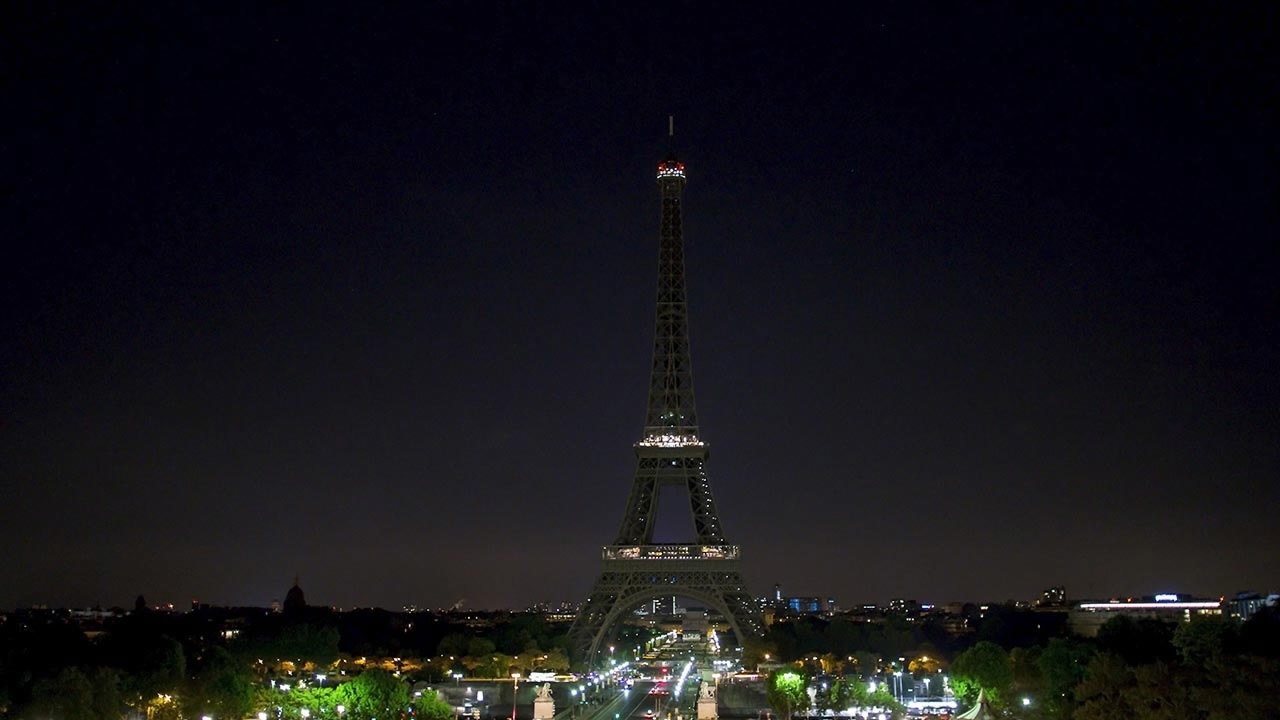
The Eiffel Tower went dark to honor the victims of a bomb attack in Kabul.
The Eiffel Tower went dark last night, Thursday night, in solidarity with the victims of this week’s bombing in Kabul. Anne Hidalgo, Mayor of Paris, explained, “Après Bagdad, c’est Kaboul qui a été la cible d’un attentat barbare. Solidarité et pensées aux victimes et à leurs proches.” After Baghdad, Kabul was the next target of a barbaric assault. Our solidarity and thoughts are with the victims and their loved ones.” On Tuesday, bombs went off in Baghdad. On Wednesday, a massive bomb went off in Kabul. In Kabul, people are grieving, mourning, stunned, and angry. Today, many are protesting the lack of security in the capital city. But otherwise, around “the world”, the incident of close to 100 dead and 500 injured has raised little interest. Why is that?
The Guardian editors noted: “There are no `I heart KBL’ signs. No #jesuisbaghdad hashtags. No one is paying tribute to the rich cultural heritage and resilience of the targets. It is unlikely that we will come to recognise the names and faces of most victims.” Washington Post foreign affairs reporter Ishaan Tharoor began his reflection in a similar vein, “It’s a truism that the world has grown numb to terrorist attacks outside the West. When the Islamic State set off a car bomb on Tuesday outside a popular ice cream shop in Baghdad, killing 13 people and wounding dozens more, no candlelight vigils took place in Western cities. No imperial monuments were lit up in Iraqi colors in European capitals. When militants set off a devastating explosion in Kabul’s diplomatic enclave on Wednesday, killing at least 80 people and injuring hundreds more, no CNN anchor uploaded the flag of Afghanistan on social media. No pop stars organized solidarity concerts.”
That truism is not good enough. “The world” has never paid attention to terrorist assaults beyond its borders, and those borders are the borders of Europe and the United States. Remember Garissa? Remember April 2, 2015, when gunmen entered the Garissa University College, in Kenya? Remember how they killed close to 150 people and injured close to 100? Remember the world response? At the time, I wrote, “As in the aftermath of the assault on the Westgate Mall, the world performs mourning, and world leaders and their messengers claim `We all stand with,’ and now will say, `Je suis Kenya.’ It’s not true. We do not mourn, and we are not Kenya.”
I was wrong. “The world” did not even perform mourning, and “world” leaders and their messengers remained pretty much silent. The silence is not because of any “distance” nor is it the result of repeated violence. It’s the division of the world between us, who inhabit the space we call “the world”, and them, who, being outside “the world”, don’t merit much attention, and certainly don’t merit the work of mourning.
Initial reports suggested that many, maybe a majority, of the dead were women and children. Not even that elicited much response. Why? Why is the blood shed in Garissa, Kabul, Baghdad less than that of Manchester or Brussels or Paris? Where are the tears for the dead of Kabul and Baghdad? We do not mourn, and we are not Baghdad or Kabul. We are “the world”.

(Photo Credit 1: CGTN / VCG) (Photo Credit 2: The Washington Post / Stefan Warmth / Reuters)
